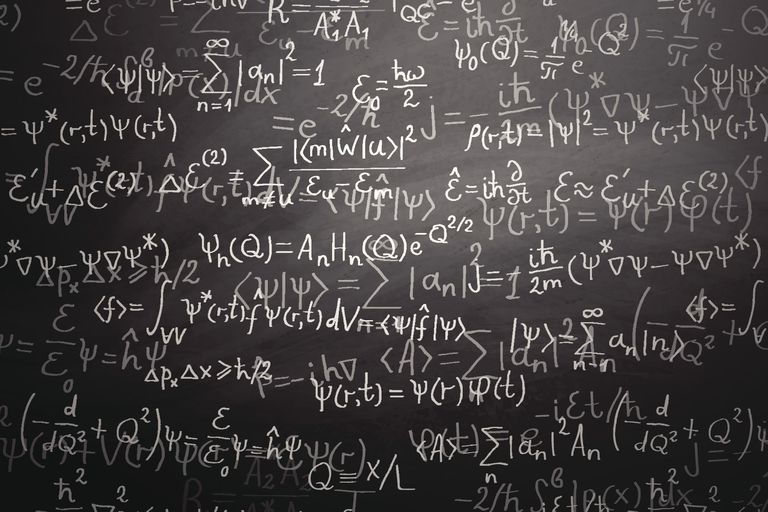Republished by Blog Post Promoter
 LEARN MORE…. https://alieninterview.org/
LEARN MORE…. https://alieninterview.org/
Republished by Blog Post Promoter
 LEARN MORE…. https://alieninterview.org/
LEARN MORE…. https://alieninterview.org/
Republished by Blog Post Promoter
An introductory video to the book ALIEN INTERVIEW. The sound track is the actual ABC Radio news broadcast from July 8, 1947.
Republished by Blog Post Promoter
Republished by Blog Post Promoter
“When the Domain Force brought the Vedic Hymns [i] (Footnote) to the Himalayas region 8,200 years ago, some human societies already existed. The Aryan people invaded and conquered India [ii] (Footnote) , bringing the Vedic Hymns [iii] (Footnote) to the area.
The Vedas were learned by them, memorized and carried forward verbally for 7,000 years before being committed to written form. During that span of time one of the officers of The Domain Expeditionary Force was incarnated on Earth as “Vishnu” [iv] (Footnote). He is described many times in the Rig-Veda. He is still considered to be a god by the Hindus. Vishnu fought in the religious wars against the “Old Empire” forces. He is a very able and aggressive IS-BE as well as a highly effective officer, who has since been reassigned to other duties in The Domain.
This entire episode was orchestrated as an attack and revolt against the Egyptian pantheon installed by “Old Empire” administrators. The conflict was intended to help free humankind from implanted elements of the false civilization that focused attention on many “gods” and superstitious ritual worship demanded by the priests who “managed” them. It is all part of the mental manipulation by the “Old Empire” to hide their criminal actions against the IS-BEs on Earth.
A priesthood, or prison guards, were used to help reinforce the idea that an individual is only a biological body and is not an Immortal Spiritual Being. The individual has no identity. The individuals have no past lives. [v] (Footnote) The individual has no power. Only the gods have power. And, the gods are a contrivance of the priests who intercede between men and the gods they serve. Men are slaves to the dictates of the priests who threaten eternal spiritual punishment if men do not obey them.”
— Excerpt from the Top Secret military interview transcripts recorded in Roswell, NM in 1947. Published in the book ALIEN INTERVIEW, edited by Lawrence R. Spencer
FOOTNOTES:
[i] “…Vedic Hymns…”
The Vedas are very exhaustive scriptures. Each veda contains several sections and thousands of hymns. Some of the Vedic hymns, especially the hymns of the Rig veda, are considered to be at least 6000-8000 years old. The Vedas are believed to be revealed scriptures, because they are considered to be divine in origin. Since they were not written by any human beings but were only heard in deep meditative states, they are commonly referred a “those that were heard”.
Here is one of the most famous hymns from the Rig Vega: :The Hymn of Creation”
“A time is envisioned when the world was not, only a watery chaos (the dark, “indistinguishable sea”) and a warm cosmic breath, which could give an impetus of life. Notice how thought gives rise to desire (when something is thought of it can then be desired) and desire links non-being to being (we desire what is not but then try to bring it about that it is). Yet the whole process is shrouded in mystery.
Where do the gods fit in this creation scheme?
The non-existent was not; the existent was not at that time. The atmosphere was not nor the heavens which are beyond. What was concealed? Where? In whose protection? Was it water? An unfathomable abyss?
There was neither death nor immortality then. There was not distinction of day or night. That alone breathed windless by its own power. Other than that there was not anything else.
Darkness was hidden by darkness in the beginning. All this was an indistinguishable sea. That which becomes, that which was enveloped by the void, that alone was born through the power of heat.
Upon that desire arose in the beginning. This was the first discharge of thought. Sages discovered this link of the existent to the nonexistent, having searched in the heart with wisdom.
Their line [of vision] was extended across; what was below, what was above? There were impregnators, there were powers: inherent power below, impulses above.
Who knows truly? Who here will declare whence it arose, whence this creation? The gods are subsequent to the creation of this. Who, then, knows whence it has come into being?
Whence this creation has come into being; whether it was made or not; he in the highest heaven is its surveyor. Surely he knows, or perhaps he knows not.”
— Reference: Wikipedia.org
 [ii] “… the Aryan people…”
[ii] “… the Aryan people…”
“The Vedic term arya– in its earliest attestations has a meaning of “stranger”, but “stranger” in the sense of “potential guest”. The Sanskrit lexicon defines Arya as mahākula kulīnārya “being of a noble family”, sabhya “having gentle or refined behavior and demeanor”, sajjana “being well-born and respectable”, and sādhava “being virtuous, honourable, or righteous”. Arya, is a title of honor and respect given to certain people for noble behavior.
The Aryan race was a term used in the early 20th century by European racial theorists who believed strongly in the division of humanity into biologically distinct races with differing characteristics. Such writers believed that the Proto-Indo-Europeans constituted a specific race that had expanded across parts of Europe, Iran and small parts of northern India. This usage tends to merge the Sanskrit meaning of “noble” or “elevated” with the idea of distinctive behavioral and ancestral ethnicity marked by language distribution.
Nazism portrayed their interpretation of an “Aryan race” as the only race capable of, or with an interest in, creating and maintaining culture and civilizations, while other races are merely capable of conversion, or destruction of culture. These arguments derived from late nineteenth century racial hierarchies. Some Nazis were also influenced by Madame Blavatsky’s The Secret Doctrine (1888) where she postulates “Aryans” as the fifth of her “Root Races”, dating them to about a million years ago, tracing them to Atlantis,
Because of historical racist use of Aryan, and especially use of Aryan race in connection with the propaganda of Nazism, the word is sometimes avoided in the West as being tainted, in the same manner as the swastika symbol. Currently, India and Iran are the only countries to use the word Aryan in a demographic denomination.”
— Reference: Wikipedia.org
[iii] “… the Vedic Hymns…”
“The term veda means “knowledge, (sacred) lore” embraces a body of writings the origin of which is ascribed to divine revelation (shruti, literally “hearing”), and which forms the foundation of the Brahmanical system of religious belief. This sacred canon is divided into three or (according to a later scheme) four co-ordinate collections, likewise called Veda:
(I) the Rig-veda, or lore of praise (or hymns); (2) the Samaveda, or lore of tunes (or chants); (3) the Yajurveda, or lore of prayer (or sacrificial formulas); and (4) the Atharvaveda, or lore of the Atharvans. Each of these four Vedas consists primarily of a collection (samihita) of sacred, mostly poetical, texts of a devotional nature, called mantra. This entire body of texts (and particularly the first three collections) is also frequently referred to as the trayi vidya, or threefold wisdom, of hymns (rik), tune or chant (saman), and prayer (yajus), the fourth Veda, if at all included, being in that case classed together with the Rik.”
— Reference: Wikipedia.org
[iv] “…Vishnu…”
“Vishnu is the All-Pervading essence of all beings, the master of and beyond the past, present and future, the creator and destroyer of all existences, one who supports, sustains and governs the Universe and originates and develops all elements within. In the Rigveda, Vishnu is mentioned 93 times.
The traditional Sanskrit explanation of the name Viṣṇu involves the root viś, meaning “to settle, to enter”, or “to pervade”, and a suffix nu, translating to approximately “the All-Pervading One”.
He has nine avatars, or ‘incarnations’ (which) are described as having occurred in the past, with one still to happen at the end of Kali Yuga. The Bhagavad Gita mentions their purpose as being to vanquish negative forces.”
— Reference: Wikipedia.org
[v] “…past lives.”
A “past lives” scenario automatically infers a “future life” in the context of an amnesia and prison planet operation. This implies the phenomenon of reincarnation:
“Reincarnation literally “to be made flesh again”, is a doctrine or metaphysical belief that some essential part of a living being (in some variations only human beings) survives death to be reborn in a new body. This essential part is often referred to as the spirit or soul, the “higher” or “true” self, “divine spark”, or “I”. According to such beliefs, a new personality is developed during each life in the physical world, but some part of the self remains constant throughout the successive lives.
Belief in reincarnation is an ancient phenomenon. This doctrine is a central tenet within the majority of Indian religious traditions, such as Hinduism (including Yoga, Vaishnavism, and Shaivism), Jainism, and Sikhism. The idea was also entertained by some Ancient Greek philosophers. Many modern Pagans also believe in reincarnation as do some New Age movements, along with followers of Spiritism, practitioners of certain African traditions, and students of esoteric philosophies such as Kabbalah, Sufism and Gnostic and Esoteric Christianity. The Buddhist concept of Rebirth although often referred to as reincarnation differs significantly from the Hindu-based traditions and New Age movements in that there is no “self” (or eternal soul) to reincarnate.
During recent decades, a significant minority of people in the West have developed a belief in reincarnation. Notable exceptions include Henry Ford and General George Patton.
Henry Ford was convinced he had lived before, most recently as a soldier killed at the battle of Gettysburg. A quote from the San Francisco Examiner from August 26, 1928 described Ford’s beliefs:
“I adopted the theory of Reincarnation when I was twenty-six. Religion offered nothing to the point. Even work could not give me complete satisfaction. Work is futile if we cannot utilize the experience we collect in one life in the next. When I discovered Reincarnation it was as if I had found a universal plan I realized that there was a chance to work out my ideas. Time was no longer limited. I was no longer a slave to the hands of the clock. Genius is experience. Some seem to think that it is a gift or talent, but it is the fruit of long experience in many lives. Some are older souls than others, and so they know more. The discovery of Reincarnation put my mind at ease. If you preserve a record of this conversation, write it so that it puts men’s minds at ease. I would like to communicate to others the calmness that the long view of life gives to us.”
General George S. Patton was a staunch believer in reincarnation and, along with many other members of his family, often claimed to have seen vivid, lifelike visions of his ancestors. In particular, Patton believed he was a reincarnation of Carthaginian General Hannibal.
The most detailed collections of personal reports in favor of reincarnation have been published by Professor Ian Stevenson, from the University of Virginia, in books such as Twenty Cases Suggestive of Reincarnation.
Stevenson spent over 40 years devoted to the study of children who have apparently spoken about a past life. In each case, Professor Stevenson methodically documented the child’s statements. Then he identified the deceased person the child allegedly identified with, and verified the facts of the deceased person’s life that matched the child’s memory. He also matched birthmarks and birth defects to wounds and scars on the deceased, verified by medical records such as autopsy photographs.
In a fairly typical case, a boy in Beirut spoke of being a 25-year-old mechanic, thrown to his death from a speeding car on a beach road. According to multiple witnesses, the boy provided the name of the driver, the exact location of the crash, the names of the mechanic’s sisters and parents and cousins, and the people he went hunting with — all of which turned out to match the life of a man who had died several years before the boy was born, and who had no apparent connection to the boy’s family.
Stevenson believed that his strict methods ruled out all possible “normal” explanations for the child’s memories. However, it should be noted that a significant majority of Professor Stevenson’s reported cases of reincarnation originate in Eastern societies, where dominant religions often permit the concept of reincarnation. Following this type of criticism, Stevenson published a book on European cases suggestive of reincarnation.”
— Reference: Wikipedia.org
Republished by Blog Post Promoter
 “Quantum” comes from the Latin meaning “how much”. Quantum physics is the study of the behavior of matter and energy at the molecular, atomic, nuclear, and even smaller microscopic levels. In the early 20th century, scientists discovered that the laws governing macroscopic objects do not function the same in such small realms.
“Quantum” comes from the Latin meaning “how much”. Quantum physics is the study of the behavior of matter and energy at the molecular, atomic, nuclear, and even smaller microscopic levels. In the early 20th century, scientists discovered that the laws governing macroscopic objects do not function the same in such small realms.
In the realm of quantum physics, observing something actually influences the physical processes taking place. Light waves act like particles and particles act like waves (called wave particle duality). Matter can go from one spot to another without moving through the intervening space (called quantum tunnelling). Information moves instantly across vast distances. In fact, in quantum mechanics we discover that the entire universe is actually a series of probabilities. Fortunately, it breaks down when dealing with large objects, as demonstrated by the Schrodinger’s Cat thought experiment.
Ironically, ideas of “quantum physics” is a subject understood for thousands of years by persons who know that the physical universe is the RESULT of “spiritual creation” or thought, and not the SOURCE of thought or creation:
~ from ancient Vedic scripture
(Idham thadhakshare parame vyoman) “the aakaash (spiritual force) is not destructible, it is the primordial absolute substratum that creates cosmic matter”.
~ from The Life of Apollonius of Tyana, Philostratus, 220AD
“And they allowed Apollonius to ask questions; and he asked them of what they thought the cosmos was composed; but they replied; “Of elements.” “Are there then four?” he asked. “Not four,” said Larchas, “but five.” “And how can there be a fifth,” said Apollonius, “alongside of water and air and earth and fire?” “There is the ether,” replied the other, “which we must regard as the stuff of which gods are made; for just as all mortal creatures inhale the wire, so do immortal and divine natures inhale the ether.” “Am I,” said Appollonius, “to regard the universe as a living creature?” “Yes,” said the other.”
~ Nikola Tesla, from his work Man’s Greatest Achievement (1930):
“What has the future in store for this strange being, (humans) born of a breath, of perishable tissue, yet immortal, with his powers fearful and divine? What magic will be wrought by him in the end? What is to be his greatest deed, his crowning achievement?
All perceptible matter comes from a primary substance, or tenuity beyond conception, filling all space, the akasha or luminiferous ether, which is acted upon by the life giving Prana or creative force, calling into existence, in never-ending cycles all things and phenomena.”
~ from the book Alien Interview (Roswell, 1947)
“There are as many universes as there are IS-BEs (Immortal Spiritual Beings) to imagine, build and perceive them, each existing concurrently within its own continuum. Each universe is created using its own unique set of rules, as imagined, altered, preserved or destroyed by one or more IS-BEs who created it. Time, energy, objects and space, as defined in terms of the physical universe, may or may not exist in other universes.”